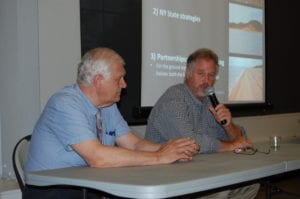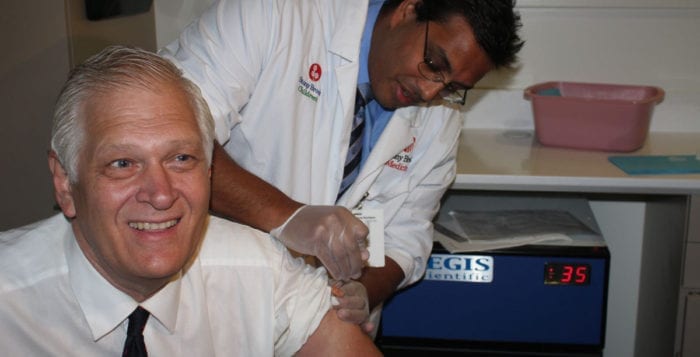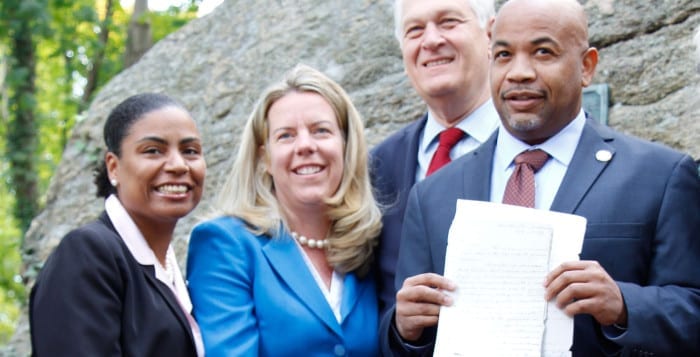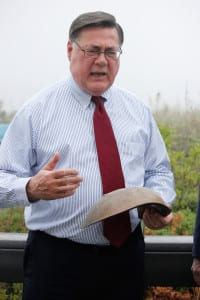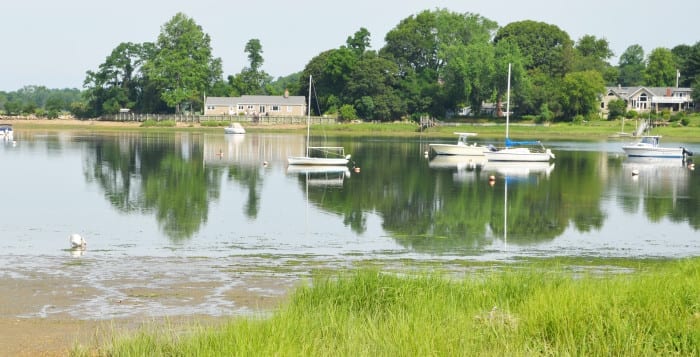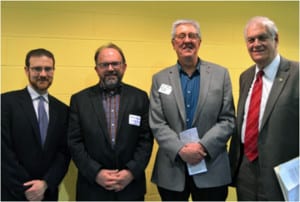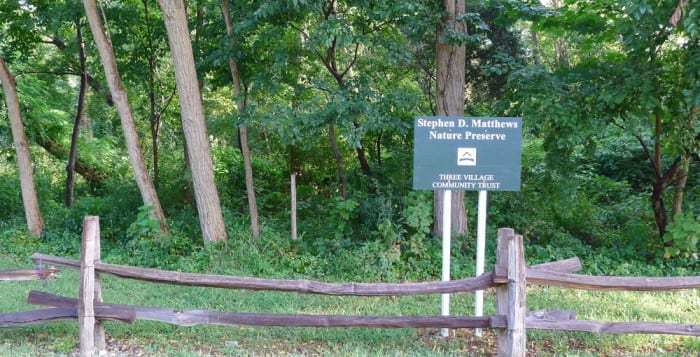On July 10, the Ward Melville Heritage Organization celebrated the 75th anniversary of the Stony Brook Village Center with a day of festivities, music, antique cars, and special remembrances.
A gathering on the village green brought together the trustees of the WMHO, community members, and representatives of government from the state, the county, and the town.
Curious passersby also stopped to listen as each of the speakers gave his or her own perspective on the little New England village that Ward Melville first dedicated in the summer of 1941.

The first to address the assemblage was Walter Hazlitt, a longtime resident of Stony Brook who was present at the first dedication ceremony. He was a teenager then and remembers all the hoopla and watching the parade.
The WMHO has film from that dedication. It is on view as part of a special summer exhibit, “It takes a team to build a village,” at the Educational & Cultural Center.
“The project that was started by Ward Melville was the [impetus] that made Stony Brook what it is today,” said Hazlitt. “The story [of this new center] was in several New York newspapers,” he added, remembering the tourists who began to come here. He opined that Melville started something grand, and Governor Nelson Rockefeller continued Stony Brook’s growth by establishing — with Melville’s help — a state university that is “unparalleled.”

Suffolk County Legislator Kara Hahn (D-Setauket) spoke of her idyllic childhood in Stony Brook.
“Small things have changed; so much has stayed the same,” she said. “It is the same extraordinarily beautiful view. You turn around and you look out over Hercules, you look around at the green space we have in our community — where we come together at special moments — this is the most magical, special place.”
State Assemblyman Steve Englebright (D-Setauket) also gave his take on the village.
“Historically — and I love the fact that we have these antique vehicles here — this is the first mall in America,” he said. “That’s quite remarkable. Ward Melville and his designer Richard Haviland Smythe envisioned a coming of age of the automobile, and they designed accordingly. This is the first shopping mall designed for the automobile specifically, and for that reason, if for no other, this is a part of our national heritage.”
Councilwoman Valerie Cartright (D-Port Jefferson Station) and Supervisor Edward Romaine (R) represented Brookhaven Town. Cartright spoke of reading that the Melville family came across the site by accident.
“Being a woman of God,” she said, “I don’t believe in accidents … I truly believe they were divinely guided here.”
Romaine spoke of Ward Melville’s boldness, calling him “a visionary.”
“He convinced store owners that this wasn’t going to drive them out of business, that this was the way to go,” he said. “And the results endure to this day, 75 years after [the village] was dedicated. Its lesson is what good planning — what having a decent vision for the future of a community — is all about.”




